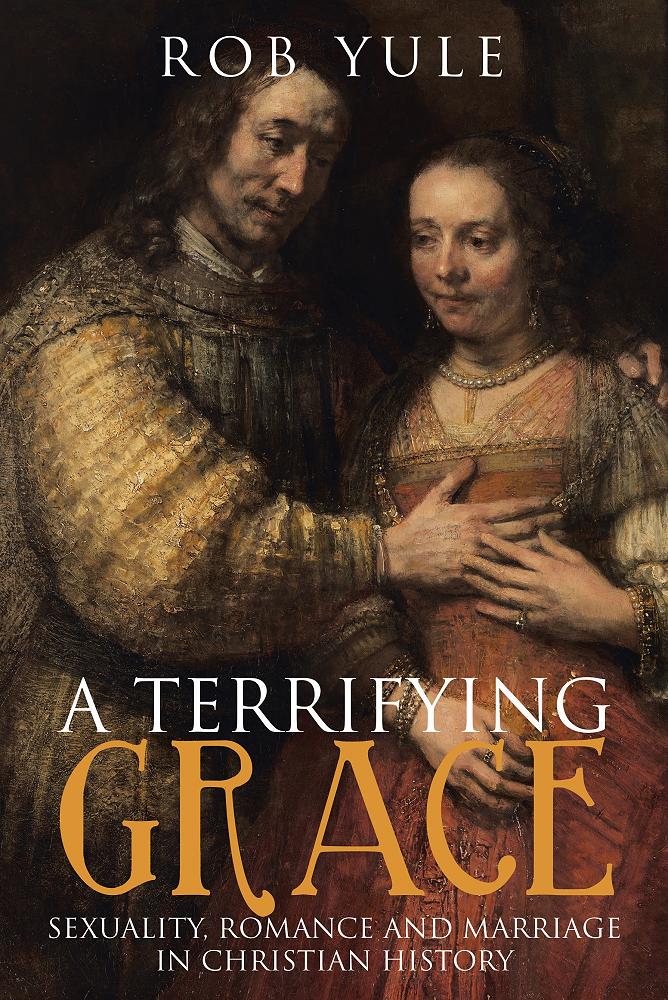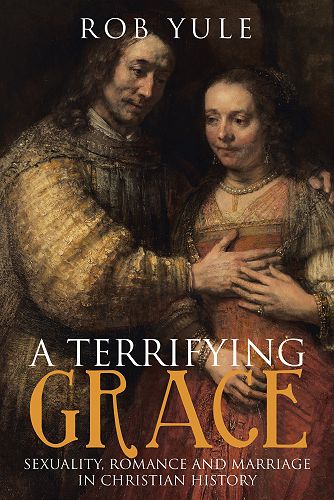
Book Review: A Terrifying Grace: Sexuality, Romance and Marriage in Christian History
Rob Yule
This book had its genesis in a series of lectures given at Emmaus College, Palmerston North. Essentially it looks at the marital/sexual life (or its thought) in twelve great figures in church history. Six are figures from the fourth to the eighteenth centuries, and the others are from the twentieth century.
Yule has the ability to tell a good story, and to enunciate the thinking of a number of these figures in depth. The outcome is an engaging but not lightweight book.
Yule begins with Augustine. He had his own conflicted engagement with sexuality – hence his famous prayer, “Grant me chastity but not yet” (5).[1] Yule attributes Augustine’s “denigration of marriage” (1) to Augustine’s own earlier struggles in relation to sexuality. The brilliance of Augustine’s overall thought, his view that the main purpose of marriage was procreation (16), and his connecting the sexual act with original sin (10) all contributed to a “fateful legacy” (13) that cast a centuries-long shadow over marriage.
Protestant influence later helped recover a healthier and more positive Christian view of marriage. Martin Luther’s earthy spirituality, along with his rich and sparky marriage to Katie contributed greatly to this shift (chapter 3). So did the surprising positivity of early evangelicalism with its roots in Puritanism, expressed in the thought of Jonathan Edwards (94).
One striking feature of the book is the number of Christian “giants” who had messy lives in relation to love and marriage. One such was John Wesley, whose dithering in relation to Sophia Hopkey when in Georgia, eventually led to his fleeing the colony (105-107). Ten years later there was further muddle when for several months he travelled with Grace Murray on itinerant ministry, and entered into a de praesenti marriage (a common law marriage of verbal commitment though lacking formal public recognition) with her (108-113). This relationship (described in “engagement” terms by Yule) was broken up by the intervention of John’s brother, Charles.
This intervention may have contributed to a disastrous rebound marriage of John Wesley with Mary Vazeille fifteen months later. Wesley lived by his marital philosophy: “In travelling abroad, the Methodist preacher who has a wife should be as though he had none” (116). Wesley’s marriage quickly struggled, and eventually broke down. Wesley insisted his wife be obedient to him: “[E]very act of disobedience is an act of rebellion against God” (120). Mary separated from Wesley for periods of time. At the final separation, Wesley wrote in his journal, “I did not leave her; I did not dismiss her; I will not recall her” (121). Although Wesley was not unfaithful sexually to his wife, he drew at times too emotionally close to his female secretaries, particularly to Sarah Ryan (118-119). Are the heavenly minded sometimes too naïve when it comes to earthly relationships?
The great Protestant theologian, Karl Barth, is shown to have even greater feet of clay in relation to sexuality and marriage. Barth remained within a lifeless marriage, despite asking his wife at one point for a divorce (132). Barth taught extensively on marriage, “an exclusive life partnership” that “does not know any third party, male or female” (126). Notwithstanding such views, Barth formed a profound attachment with his secretary, Charlotte von Kirschbaum. This led to her living in the Barth household for thirty-five years (129). Effectively there was a threesome marriage. How could such a great theologian live in such a muddle and in such contradiction to his own teaching?
Marital questions could also be raised in relation to Francis Schaeffer. While the Schaeffers were establishing the L’Abri retreat centre, Francis was also struggling with depression, and occasionally lashed out in violence against his wife, Edith (169). It was, Edith later recalled, “that difficult time”. The family survived; and the couple eventually flourished, despite their struggles in their supportive and separate ministries.
With the marriages of several heroes of the faith apparently shaky and in some cases failing altogether, where are the good marriages? Yule does portray several positive marriages, but the overall weighting of the book seems to be negative. The most positive marriage exemplar in the book is that of Billy and Ruth Graham. One aspect of this was their avoidance of scandals that struck other Christian celebrities such as Jimmy Swaggart, and Jimmy and Tammy Faye Bakker. This is likely linked with guidelines adopted by the Billy Graham team to avoid reproach and in particular never to be alone in a room with someone of the opposite sex, except a family member. Billy Graham asserted, "From that day on, I did not travel, meet, or eat alone with a woman other than my wife" (212). Old-fashioned principles? Yes; but no hint of scandal either.
Yule’s book mainly focuses on the marital relationships of prominent Christians. Moralizing or exploring an ethic or theology of marriage is less to the fore. However, there is major consideration of the marriage philosophy of Pope John Paul II in the final chapter of the book. Yule notes particularly his “theology of the body”, “giving Catholic faithful around the world a fresh understanding of marriage as an image and embodiment of the love of the triune God” (227). Marital love “represents the highest form of reciprocal self-giving” and produces a one-flesh unity between the two (232). Despite such lofty sentiments, John Paul’s life remains a puzzle in the area of romance and marriage. Clearly, as a Catholic priest, marriage and sexual expression were off-limits for him. Yet he developed a close, thirty-two year friendship with Anna-Teresa Timieniecka that included skiing and camping holidays together (225). Certainly there can be very fine platonic relationships between the sexes (though the realities of human nature sometimes make this easier said than done). But, on the principle that morality must not only be done but be seen to be done, did such a public figure as John Paul II act wisely here?
What do I make of Yule’s book? Frankly it leaves me puzzled. Marj and Murray Robertson also seem puzzled when commending the book on its back cover: “After reading of some truly unusual unions, it was a relief to read of the integrity of the marriage of Ruth and Billy Graham”.
The puzzle lies in figuring out the purpose of the book. Its weighting leans towards failings within the marriages of some well-known Christians. It is not primarily holding up good marriages as exemplars. Nor is it mainly articulating a theology and practice of good marriage. So what is it trying to do? Is it trying to warn of the risk of marriage – “a terrifying grace” as the title indicates? I don’t know.
Here is a book that is gripping in its story, and provoking in its exposé of marital weaknesses and failings. But with that there lingers a sour taste, a reminder more of the frailty and sinfulness of people than of the renewing and refreshing grace of God in the difficult area of human relationships. I remain puzzled.
Laurie Guy is an adjunct lecturer at Carey Baptist College
*To see the full publishing information, please click on the image below
[1] Confessions, 8.7.17.
Gallery

